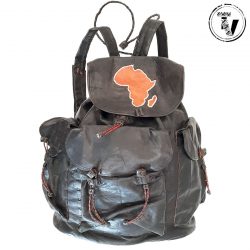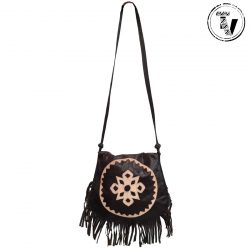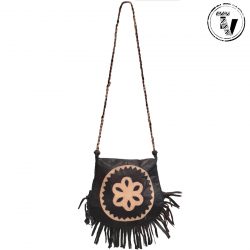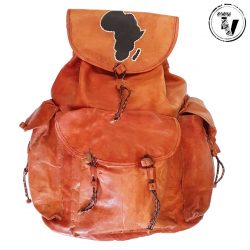Description
Diviners Bag (Apo Ifa)
Used to carry divination objects and tools, the bags are worn in public ceremonies by
Ifa priestesses and used and displayed in their homes.
Beads were signs of wealth and status. The beaded front lifts up to reveal a pouch on the back panel.
Cowrie shells are known as the most successful and the best form of currency in the various regions of the world. According to the African legends, the cowrie shells are representing the goddess protection which is highly powerful and is connected with the strength and power of the Ocean. Even as these beautiful and small shells have resembled the lifegiving organs of females, therefore, these are also known as elixir or giver of life which is why wearing a Cowrie Shell jewelry is always a good idea!
The cowrie shells are used as currency and known as the worthiest ones. As a currency, these were commonly being used in various parts of Africa. Due to this, the cowrie shells are also been recognized as prosperity. Even more, these shells also symbolize the power of density.
Moreover, the cowrie shells are also believed that these are to have taught the stories of respect and humanity.
The most emblematic and personalized accessory of a Yoruba diviner (babalawo) is his apo Ifa, a beaded leather bag featuring brilliant adornment that is not merely decorative but constitutes a commentary on his vocation through its materials and color scheme. Dedicated to the perpetual pursuit of knowledge, diviners lead a peripatetic existence, making themselves available as advisers and seeking out renowned colleagues whose wisdom and talent might expand their own understanding.
In view of their itinerant way of life, Yoruba babalawo have been compared to artists and is described as “travelers who are strangers everywhere, at home nowhere.”Their mobility and freedom to practice their profession anywhere are facilitated by a portable set of divining implements, which includes palm nuts (opele Ifa), a tray (opon Ifa), a tapper (iroke Ifa), and a small ivory head symbolic of the god Esu (also called Elegba). These are carried in the apo Ifa, the outer flap of which may be decorated with cowrie shells or imported European beads. The fundamental importance of the apo diviner’s way of life is indicated by the epithet akapo (“carriers of bags”).
The high status of Ifa diviners in Yoruba society is reflected in the access they have to materials reserved for royalty, such as ivory and beadwork. The primary emblem of Yoruba divine kingship is a beaded crown, which is worn with other beaded accessories, such as slippers and gowns. That such highly valued and expensive materials are also incorporated into the finery associated with diviners is not merely a sign of their elevated rank but an acknowledgment that both kings and diviners are leaders whose authority stems from their relationship to orun, the otherworld. There is a diviner’s aphorism that alludes to their beaded regalia as visible signs of their comparable power: “[I] share things equally with rulers, they wear kings’ crowns and I wear [diviners’] beaded necklaces.”
According to Yoruba color theory, the chromatic scale may be measured in terms of tonal gradations and temperature, and their full range serves as a metaphor for forces within the cosmos. Three primary color groups are each associated with distinct character traits: white (funfun) is associated with cold; red and the related colors pink, orange, and yellow (pupa), with heat; and black and the related colors blue, purple, and green (dudu) are the mediating tones in between.






